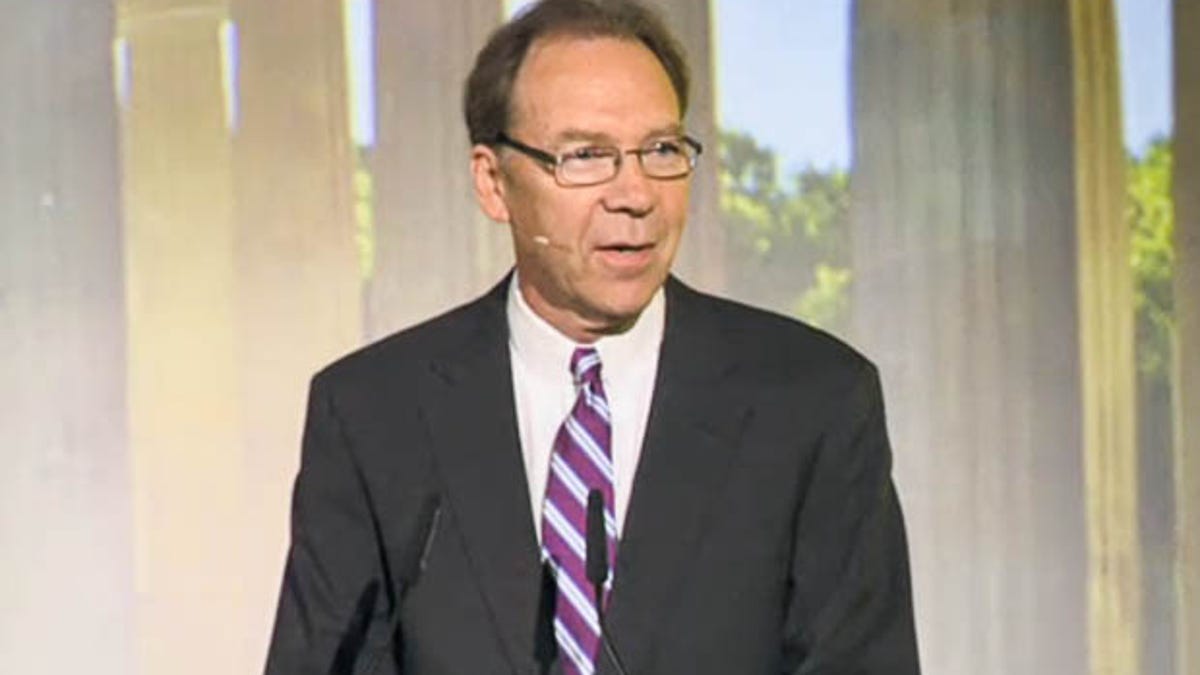Sprint CEO: 2014 is our comeback year
Dan Hesse says Tuesday that the company must go through some short-term growing pains, but should start to see network improvements by the middle of 2014.

NEW YORK -- Sprint CEO Dan Hesse believes that 2013 was Sprint's rebuilding year, but he sees the company making a turn around by mid-2014.
Speaking at an investor conference in New York on Tuesday, Hesse told an audience of analysts and investors that it has been personally painful for him to watch the company lose customers as it rips out its old network infrastructure and replaces it with new gear as part of its Network Vision program and its new Spark enhanced LTE network upgrade.
"What we are going through right now is a massive buildout that is causing some short-term pain for long-term gain," he said. "This is personally painful for me. We have worked so hard to improve customer satisfaction."
Hesse said that regardless of consumer-friendly policies, such as unlimited data for life, the fact that the network has not been performing up to snuff has hurt the company in the short term.
"What's been frustrating is when we come out with something like 'unlimited data for life,' and then we have network issues," he said. "Unfortunately, we have to go through this hard period of time, so we face a headwind that our competitors don't have."
But Hesse said that the Network Vision program that basically replaces equipment throughout Sprint's network and replaces it with upgraded and more flexible hardware is paving the way for the company to have a stronger and better performing network in the future. He said when the company completes this transition, Sprint's network will be faster, more reliable, and more future-proof than its competitors' networks.
Hesse likened the transition to the story of the "Three Little Pigs." Sprint is building a house of brick while its competitors are using straw and stick. And even though Sprint's network is taking a longer time to build the network, it will last longer. And he said that customers will soon see the fruits of this labor.
"We believe that what we are building is something that is worth waiting for," he said.
Still, he acknowledged that Sprint has been losing customers and will continue to lose customers as the network is built out in 2014. But he said that the pattern in customer losses has been a predictable one, and he expects that Sprint will actually end up gaining more customers than it started with once the network is complete. He used Chicago as an example of this. It was one of the first large markets where Sprint launched Network Vision and Spark, and it was a market in which Sprint switched equipment vendors in building out this new network.
Hesse said that as the company ripped out its old infrastructure, it saw voice quality degrade. Customers experienced more dropped and blocked calls, and as a result, frustrated customers left Sprint. But as soon as the upgrade was 70 percent complete in certain neighborhoods, voice services dramatically improved and the churn rate slowed. And as the network neared completion in certain areas of the city, subscribership started to come back, even to levels higher than they were before the upgrade.
"We will see churn get worse as we build Network Vision," he said. "And then it starts to improve and will improve to a level that is much better than where we started when it's over. So we have to go through the short term pain to reach the long term gain."
He said that much of the Network Vision network should be built out by the middle of 2014, and that's when he expects to see improvements in subscriber numbers.
To show just how ready Sprint is for its new and improved network, Hesse showed off the Samsung Galaxy S4, its latest Sprint Spark LTE handset, which uses a tri-band radio that can access all three swaths of spectrum-- 800MHz, 1.9GHz and 2.5GHz-- that Sprint is using for its LTE network.
Sprint plans to deploy Sprint Spark in about 100 of the largest cities in the US over the next three years. Today, it's available in five cities: New York, Los Angeles, Chicago, Tampa, and Miami. By the middle of 2014, Sprint 4G LTE service is expected to be available to approximately 250 million Americans, and Sprint expects 100 million Americans will have Sprint Spark or 2.5GHz coverage by the end of 2014.
A corporate spokesman issued a statement following Hesse's talk stating that the Samsung Galaxy S4 with Sprint Spark will be available for $199.99 (excluding taxes) with a new line or eligible upgrade and two-year service agreement after a $50 mail-in rebate.

